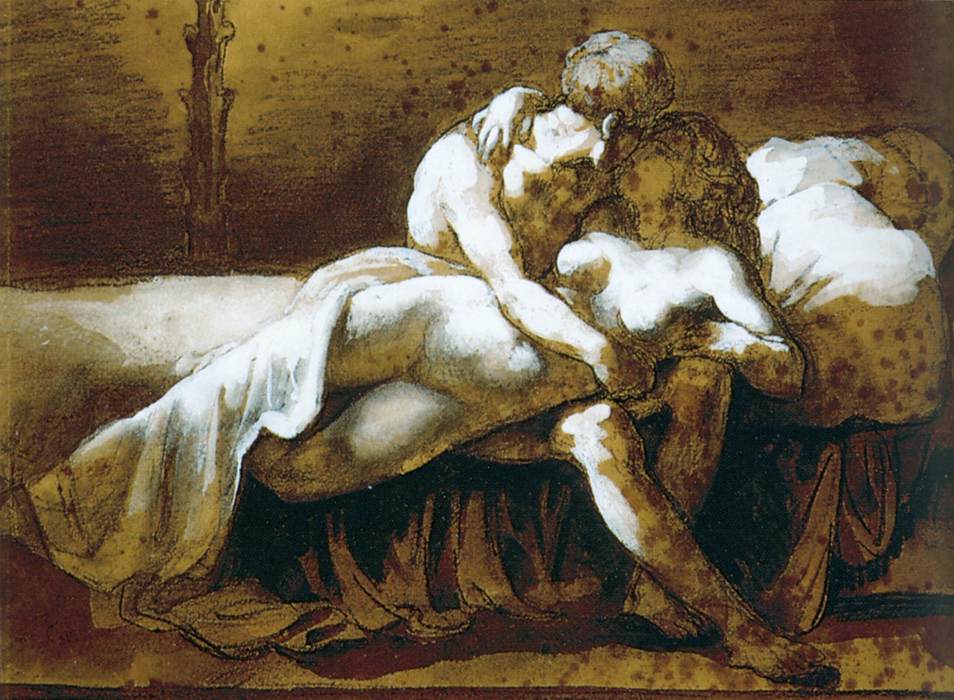Yes
For a start, I am not going to discuss this question by using the term ‘corrupt.’ This word carries all kinds of negative connotations and moral judgements. I am not against pornography but I want to highlight how it has the potential to be “harmful” to some individuals.
Whilst a 21 year old university student is likely to understand that a woman performing extreme oral sex for 30 minutes in a video is a paid actress, for an 11 year old who can easily access the video by simply typing ‘oral sex porn’ into Google, this may not be the case.
Pornography can depict, or even promote, a misleading reality of sex and of gender roles. If an 11 year old has not yet had sex education, pornography could be their primary resource of information.
Their first experience of sex may be seeing a video of someone being slapped and aggressively penetrated in the anus. With no other basis of knowledge, they may think that this is how everyday sex works. They may be intimidated by this, or even see this as a demonstration that this activity is always appropriate.
Pornography gives a warped view of sex because the more unusual and extreme videos get more hits (making the producer more money). I remember in my early years of high school when “Two Girls, One Cup” caused a sensation. Even Year 7s were watching and discussing the video.
Pornography is now part of mainstream culture to such an extent that young girls and boys in schools are viewing it on their phones and discussing it at lunchtime.
Whilst some would not be disturbed by this, for others this could be deeply troubling and give them a misleading view of what sex is usually like. Sex education needs to talk about pornography more.
Pornography also has the potential to damage men and women’s self-esteem and confidence in their bodies. Scientific studies estimate that the average male penis is 5 and a half inches. From watching pornography one might think that most men are in fact closer to 8 inches.
Actors (let us remember what the people in pornography are) with larger penises are favoured in casting by porn directors and men who perceive themselves as having larger penises are more likely to have the confidence to audition for or to appear in porn.
This reinforces the idea that a man’s value is determined by his body. This skewed portrayal of the male anatomy could cause serious worry among men.
Porn also often gives the impression that sex lasts an inordinate amount of time. The reality is, on average, closer to 5 minutes. This again has the potential to give anxiety and lower self-esteem by presenting staged and unrealistic situations.
Another example: a viewer may have seen countless videos in which a female or male performs oral sex for a very long time. They may have expectations that a future partner could and should do this. In reality, many people are uncomfortable with oral sex or would not like to perform oral sex for an hour straight – but these people are rarely those depicted in pornography.
If you want to watch porn, that’s completely OK, but be aware that it’s really all an act – and one for commercial gain.
Madeleine Smithers
No
It would not just be reactionary, but fundamentally naïve, to decry all pornography as a monolithic block and all-corrupting force.
Whilst there can be no equivocation that porn has a profound impact on the development of one’s sexual consciousness, I maintain that it is no more ‘corrupting’ than other depictions of sex, or anyone’s personal experience as a sexually active, consenting human being.
I would go even further, stressing that throughout history pornography has not just been socially transgressive, but wilfully political and intellectually nourishing; something more, I’d suggest, than those arguing against this statement would dare to claim of their own ‘wholesome’ sexual appetites and private exploits.
The comedian Bill Hicks once referenced the US Supreme Court’s troubled definition of pornography in his famous joke about, what he perceived to be, the sordid nature of consumer-capitalism, stating:
“Pornography is anything without artistic merit that causes sexual thoughts; that’s their definition, essentially. No artistic merit, causes sexual thoughts. Hmm. . . . Sounds like . . . every commercial on television, doesn’t it?”
It should go without saying that both these sentiments are as adolescent as they are simplistic. Sadly, too many throughout history have been willing to dismiss the obscene and pornographic as antithetical to that that can be praised as worthy.
But whether it is the satirical poetry of John Wilmot, the debauched writing of Sade, the radical febrile prose of Georges Bataille, or the explicit films of Pasolini, at times of great political and philosophical revolution we often find the most vivid and degrading depictions of sexuality used to espouse what Bataille called ‘the impossible liberty’ of shifting social mores.
Sontag insists in her essay The Pornographic Imagination:
‘The materials of art are the variety of forms of consciousness. By no aesthetic principle can this notion of the materials of art be construed as excluding even the extreme forms of consciousness…What makes a work of pornography part of the history of art rather than of trash is not distance, the superimposition of a consciousness more conformable to that of ordinary reality upon the ‘deranged consciousness’ of the erotically obsessed. Rather, it is the originality, thoroughness, authenticity, and power of that deranged consciousness itself, as incarnated in a work’.
Naturally, I should never be as bold as to assert that the last grainy porn scene you streamed online possessed the same complexity of consciousness or aesthetic merit as Salò or Story of the Eye, but I find it irrational for anyone to be equally as bold as to exclaim that the former was any more ‘corrupting’.
Graphic depictions of sex in works of pornographic art and graphic depictions of sex in pornographic trash rarely differ in their explictness. One is elevated through deft composition or an allegorical nature, but the images can be no more or less damaging. To affirm otherwise would not only be prudish but dishonest.
Doubtlessly, porn is not without its problems. For example, social anxiety about falling short of the fantastic enlargements and exaggerations presented in it may come as a concern for some, but these preconceptions of what all sex is really like are often disregarded as people navigate their way through the sometimes disappointing sphere of reality.
However, it should be said that porn is almost unrivalled in its fair reflection of societal diversity. Unlike almost any other popular media, all sexes, body-types, races and sexual orientations are not only represented but made desirable in some fashion or other.
Furthermore, the assorted range of sex acts, and their varying intensities, is far more reflective of sexual reality than anything Hollywood has ever attempted.
It would be disingenuous not to call some porn seedy or even unseemly, but to brand it ‘corrupting’ is purely hyperbolic.
Pornography is not always art, but a lack of merit does not denote anything insidious. Enjoy it. Ignore it. Try not to spend too much time watching it. It isn’t always art but, as long as it remains within current legal guidelines, one should not feel that they can universally espouse an objective aesthetic or moral judgement on what is produced. That’s just a bit Mary Whitehouse.
James Munro
Image: Wikimedia Commons





